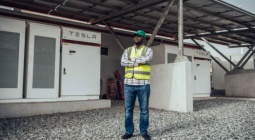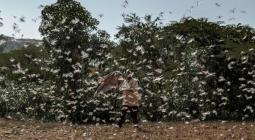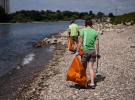Restoring Ethiopia's Ecosystems Can Support Livelihoods and COVID-19 Recovery.
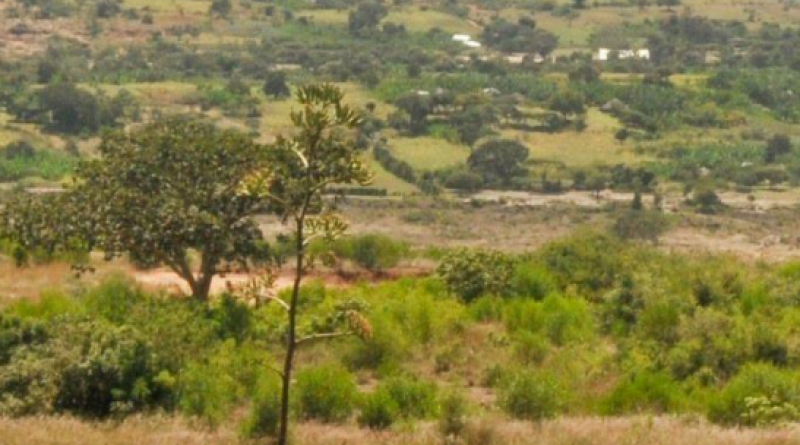
Ecosystem degradation is a major threat to livelihoods and sustainable development across the globe. Habitat loss also increases the risk of pandemics, serving to remind us of humans’ complex and delicate relationship with nature. While the origins of COVID-19 remain unclear, this is a crisis that continues to affect human health, livelihoods and economies worldwide, and threatens to overturn decades of development gains.
This is certainly true for Africa. In Ethiopia and countries across sub-Saharan Africa, vast informal economies mean dependence on hourly or daily wages. Many of these jobs ended with the introduction of pandemic-related restrictions and curfews. Consequently, even though infection rates and deaths in this area of the world remain comparatively low, COVID-19 led to the region’s first recession in 25 years and may still inflict greater economic damage. The ongoing pandemic also continues to exacerbate existing inequalities and could push 39 million more Africans into extreme poverty. In Ethiopia, GDP growth this fiscal year is expected to be 4% lower than the pre-crisis baseline, and a food security crisis looms. Ethiopia’s position as a top-performing economy in Africa and its significant progress in poverty reduction may be endangered.
While most developed countries are initiating large fiscal stimulus packages to recover from the pandemic, this is more difficult for middle- and low-income countries. In a context of inadequate services and social protections, the response should address the health and humanitarian emergency while investing in a stronger, more sustainable and resilient development path. This includes creating jobs, producing food, and protecting the landscapes, forests and freshwater ecosystems on which many communities — and economies — depend. Recovery paths that harness nature-based solutions have strong potential to be a win-win response for both livelihood security and sustainable development.
Here are three ways restoring ecosystems can support livelihoods and Ethiopia’s COVID-19 recovery, delivering benefits now and in the future:
1. Restoring degraded ecosystems can create jobs and secure livelihoods.
By some estimates, more than 85% of Ethiopia’s land is degraded. This causes low agricultural productivity, rural poverty and costs about $4.3 billion each year in lost benefits and goods. Forest, landscape and wetland restoration can help reclaim natural assets and restore productivity to ecosystems while creating numerous low-skill jobs.
According to leading economists, investing in natural capital offers some of the highest value in the form of jobs, economic growth and climate benefits. Studies show that investments in habitat restoration and sustainable agriculture can generate more employment than those in traditional “gray” infrastructure or industries like coal or gas. As such, many have called on policymakers to “green” pandemic recovery packages: In the United Kingdom, conservationists urged the government to pursue restoration in order to generate 25,000 jobs, while New Zealand aims to create 11,000 new jobs through the environmental sector. By comparison, the River Basins & Green Areas Agency of Addis Ababa recently announced its ambition to create 12,000 green jobs while Ethiopia’s National Forest Sector Development Program alone could create more than 630,000 full-time jobs.

Many restoration initiatives already exist in Ethiopia and show the potential for scaling green investments. The government’s flagship rural development program, the Sustainable Land Management Program (SLMP), supports smallholders to implement soil and water conservation measures and diversify livelihoods so as to reduce erosion, tackle deforestation and improve agricultural productivity. To date, the program has covered more than 200 woredas (districts) across six regions, with the new phase expected to reach 3.2 million people. Even on smaller scales, restoration programs can reap continued benefits. Through the Humbo Assisted Natural Regeneration Project, farmers from several community cooperatives restored more than 2,700 hectares of native forest, which in turn reduced flooding and erosion on farms and boosted crop yields and local incomes.
More recently, the Green Legacy campaign aims to plant 20 billion tree seedlings by 2024, which, if done strategically, could use the country’s youth as a workforce and serve as an engine for employment and production. Green Legacy could be repurposed as a green pandemic recovery measure in line with examples from other countries.
Existing social protection or public works programs can also be recalibrated as COVID responses. Ethiopia’s Productive Safety Net Program (PSNP) has linked temporary job creation to infrastructure development and soil conservation measures. By coordinating efforts, the PSNP has helped millions of people withstand food insecurity and reduced environmental degradation. More public and donor funds can be injected into PSNP-supported restoration projects and channeled to different regions, particularly those experiencing severe land degradation and a large inflow of returnees from cities. Directing more funds toward nature-based programs like these can help Ethiopia secure a green, prosperous economic recovery, building on lessons from its past efforts.
2. Restoring degraded watersheds can enhance water security and human well-being.
Although Ethiopia has relatively abundant water resources, its population struggles with water insecurity due to rainfall variability, limited water infrastructure, insufficient management capacity and watershed degradation. Degraded watersheds reduce land productivity as well as local water availability for households and irrigation. While clean water is critical to preventing the spread of diseases like COVID-19, 33 million Ethiopians still lack access to an improved water source and 89 million to improved sanitation.

The close linkage between healthy ecosystems and the water cycle means that forest and landscape restoration, coupled with better watershed management, can improve water supplies. Forests, for example, help regulate precipitation and flow, improve aquifer recharge, and act as filters to keep contaminants out. In areas of Ethiopia’s Amhara and Tigray regions, reforestation of watersheds coupled with conservation practices increased vegetation cover and the groundwater table, reversing degradation and improving livelihoods. A study from Gule watershed determined that crop productivity, water availability and fodder availability increased by 22%, 33% and 10%, respectively, after restoration, while household incomes increased by 56%.
The delivery of water-related ecosystem services, such as erosion and flood control, can also encourage new partnership and financing models based on the idea that healthy watersheds provide valuable social and economic gains. This can help finance restoration, with benefits flowing to upstream and downstream stakeholders.
Ecosystem health and protecting drinking water at its source are vital for delivering clean and abundant water supplies. Nature-based solutions for water can improve the quantity, timing and reliability of water, and can be cost-effective solutions for safeguarding water supplies. Strategic investments in both green and gray infrastructure could reduce Ethiopia’s vulnerability to both immediate shocks like COVID-19 and more protracted ones like climate change.
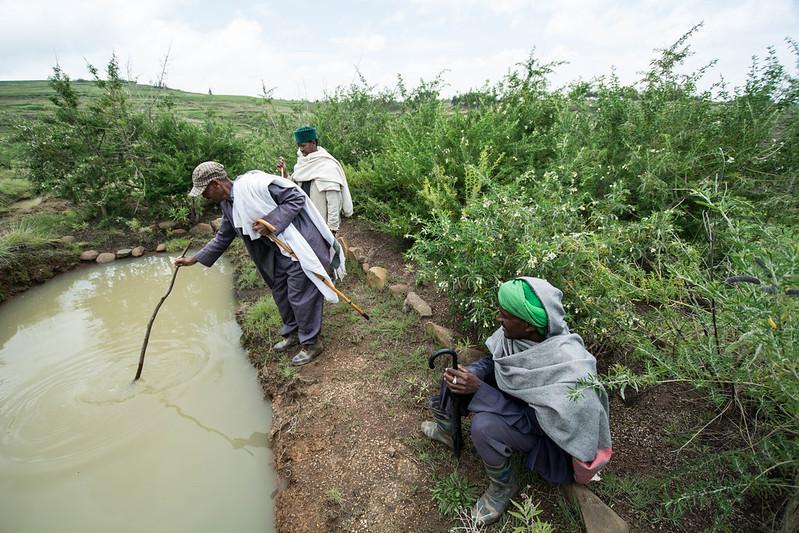
3. Restoring degraded landscapes can revive rural economies.
While ecosystems provide critical benefits to people and economies, natural capital is often undervalued or used without charge. The consequence is overexploitation and little incentive to protect those resources, undermining the very assets on which rural communities and productive activities depend.
But, rehabilitating landscapes and habitats can generate net benefits worth hundreds of billions of dollars. On-farm trees coupled with better management of soil, for instance, can increase crop yields and produce new non-timber forest products such as fruit and fodder. Landscapes that integrate agroforestry (trees on farms) and silvopasture (trees on pasture) have proven effective at ensuring farm productivity and food production. In Ethiopia, one study highlights how coffee already contributes 5% of GDP and plays a crucial role in the livelihoods of more than 15 million people. However, if quality and consistency of the superior shade-grown coffee were guaranteed via sustainable production, the socio-economic benefits resulting from higher prices could be even greater and could spur more forest protection.
As such, restoration and conservation programs can help develop new markets and enhance value chains that diversify and raise incomes in rural communities. This helps revive rural economies and provide the necessary incentives to farmers to continue to manage land sustainably. Similar to coffee, other forest products can contribute to the national economy through foreign currency earnings. Bamboo, for instance, is increasingly seen as a smart intervention since it can provide environmental and livelihood benefits while offering high-value products for export, such as furniture. Bamboo brings revenue to communities, is effective in regenerating soils, and grows swiftly with little supervision. Landscapes with investment potential can attract restoration entrepreneurs, agribusiness ventures and impact investors — particularly urgent when facing increasing pressures on public budgets.
To fully capitalize on these opportunities, restoration programs must be founded on good science and biophysical rigor, and must consider a landscape’s multiple uses and users — for a balance between social, economic and ecological benefits. Growing the right tree in the right location will avoid causing more harm than good while monitoring can help measure progress and secure seedling survival.
Recognizing the Value of Nature
The policy decisions steering a country’s recovery can shape its development path for years to come. Stimulus packages that prioritize quick financial returns over long-term sustainability needs are inherently risky and promote a false choice between growth, jobs and the environment. Economies simply will not recover on a failing planet.
The health of ecosystems is central to achieving sustainable development in Africa. Revitalized landscapes create opportunity in rural areas, reduce long-entrenched vulnerabilities and build resilience to climate change. Fortunately, many countries have already made commitments to ecosystem restoration through the UN Decade on Ecosystem Restoration and regional alliances like AFR100, but more must be done. Across the globe, nature-positive solutions could create 395 million jobs by 2030 while stimulating growth and tackling the climate crisis. Understanding the value that ecosystems provide and the dangers of environmental degradation can reveal what is at stake, as well as the costs of inaction. A new discourse around the economic case for investing in nature can spur action beyond environmental agencies. It can also help motivate ministries like planning and finance to embed ecosystem protection and restoration into COVID-19 response plans — and into overall development strategies.
Indeed, nature must be seen as a core pillar of recovery. Its loss is not solely of environmental concern. It puts human health, livelihoods and economies at risk.
22 April 2021
WORLD RESOURCES INSTITUTE

